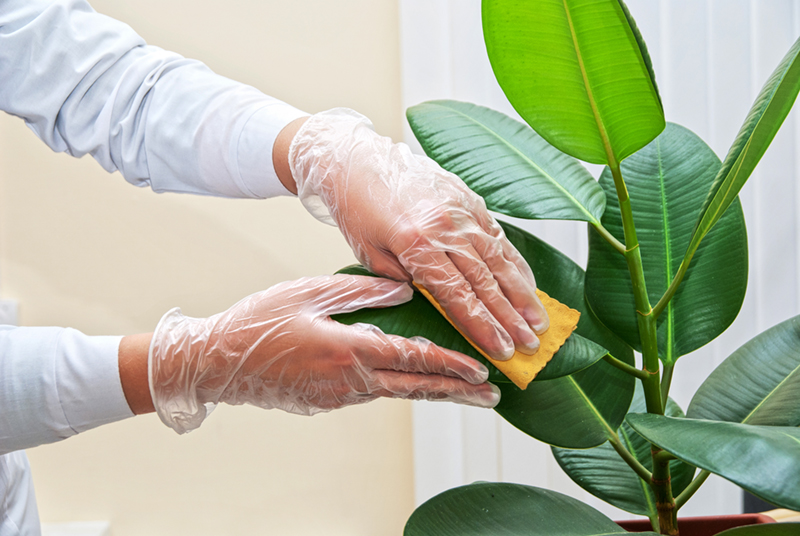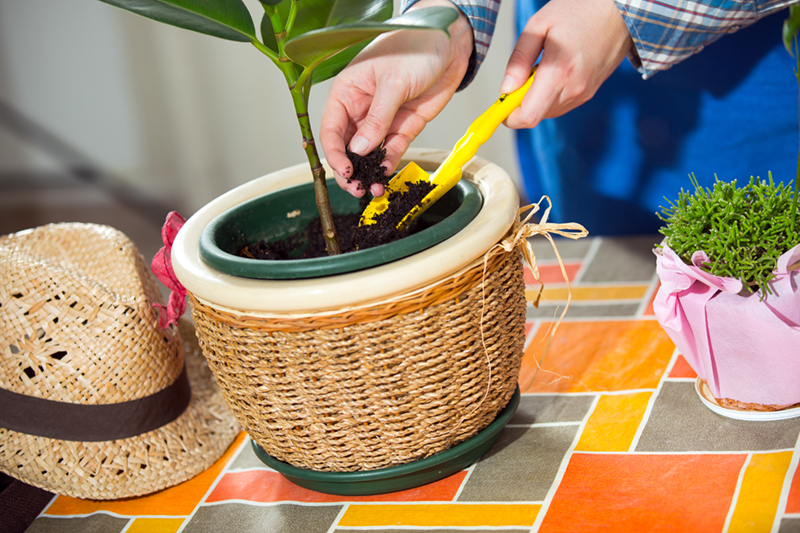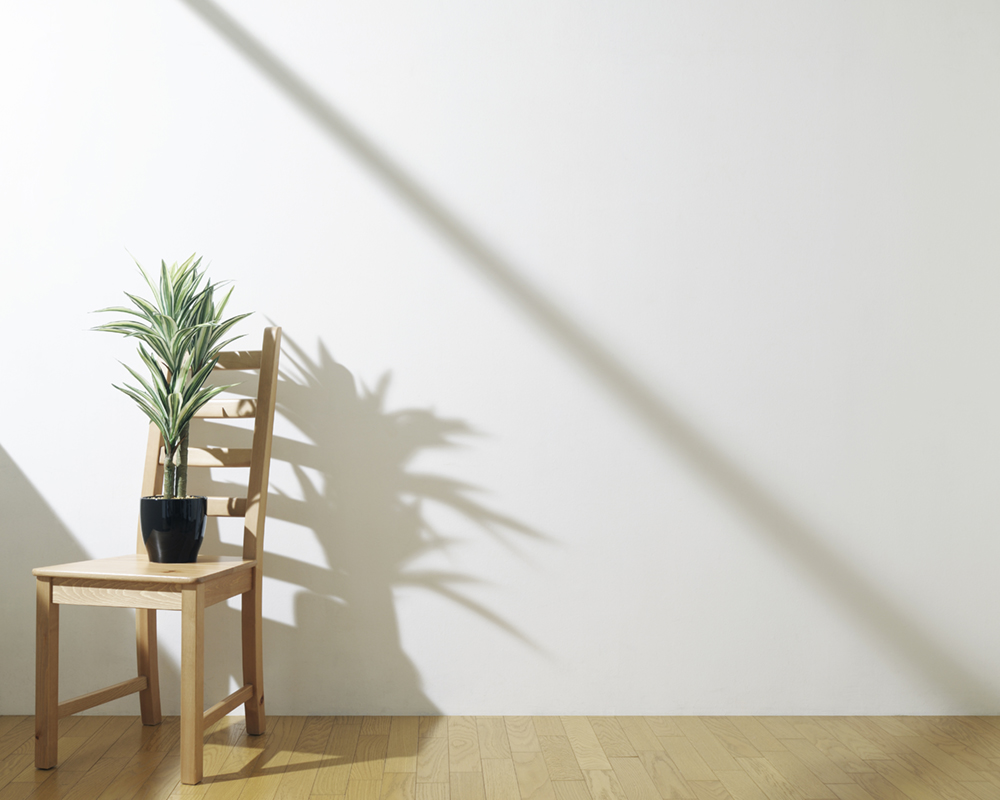Do you tend to kill every plant you touch? Rest assured that unless you make a habit of spraying your houseplants with weed killer, you’re not a plant murderer. At worst, you’re just guilty of negligence.
Whatever sad shape your houseplants are in, most can be speedily saved once you get to the root of the problem.
First, take a little time to get to know your plant so you can meet its unique needs. Learn its name, and say, “Hello, Ms. Spathiphyllum. Mind if I call you ‘peace lily’?”

Getting to know your plants will help you recognize problems and resolve them.
Now that the formalities are out of the way, do a quick search online or in a book to learn about your plant’s likes and dislikes. Your peace lily might like moist soil and bright light, for example, but not poor drainage and direct sun. Better move her away from that sunny windowsill and put her in a pot with a drainage hole.
The right treatment guarantees fewer problems in the long run, and once you’ve learned a little about your plant you can get started on fixing those issues.
Here’s a list of common problems and their solutions to get you back in good standing with your neglected houseplants.
Plant is dropping leaves
Diagnosis: Falling leaves are how your plant responds to stresses - both benign and harmful. Ficus trees, for example, are notorious for dropping perfectly healthy leaves at the drop of a hat (excuse the pun) whenever they’re moved to another room, but leaves that turn yellow and drop are a good sign that something is wrong.
Sniff the soil and look for any gnats. If the potting mix smells musty, then the plant is likely getting too much water. Overwatering rots the roots, causes fungal infections and forces the plant to drop leaves to conserve energy and moisture. Falling leaves could also be caused by cold drafts or low light.
Treatment: A plant with leaves that turn yellow and drop can be treated by ensuring that the top inch of potting mix dries out between waterings, that the pot has a drainage hole, and that the plant is away from any cold drafts.
To treat and prevent fungal infections, remove any fallen leaves immediately and make sure that the plant is getting plenty of air circulation. A small fan will help a great deal.
Plant is covered with weird stuff
Diagnosis: ‘Weird stuff’ is the best way to describe an infestation of scale insects or mealybugs. Mealybugs are usually seen as cottony balls of fluff, and scale insects are hard bumps that can be removed with a fingernail. Both suck juices from a plant and secrete a sticky substance called honeydew.
If there’s a fuzzy coating on some leaves, this is Botrytis, or gray mold. Powdery substance? That’s powdery mildew. Each of these problems can be enough to make you give up on houseplants, but don’t - there is hope.
Treatment: First of all, any infested plants should be placed away from other houseplants - in quarantine, if you will. You can remove mealybugs and scale insects by wiping all surfaces with a damp rag.

Wipe leaves with a damp cloth to remove mealybugs and scale insects.
To reduce serious infestations, remove the most severely affected leaves and spray the remaining ones with insecticidal soap according to the label instructions. If you have gray mold or powdery mildew, improve ventilation and use a systemic fungicide.
Leaves are covered with dust and webs
Diagnosis: Unless you haven’t bothered cleaning your plant in a few years, dust and webs mean you have spider mites. Spider mites are nearly too small to be seen by the naked eye, but can be identified by a dusty coating on the leaves that looks like specks of dark dots when brushed onto a sheet of white paper. You might also notice a thin webbing under the leaves.
Treatment: Remove spider mites with a damp rag, and prevent recurrences by providing more humidity and keeping the leaves clean. If the infestation is particularly worrisome, spray leaves with an insecticidal soap and wipe clean with a rag every few days. Plants with small leaves can just be sprayed.
Plant has gnats
Diagnosis: If you notice little gnats around your houseplants, these are fungus gnats. While the larvae of fungus gnats usually only eat decaying roots, they are a good sign that another problem, like overwatering, is at play.
Treatment: The presence of gnats doesn’t always mean that you’re overwatering, but does mean there are dead roots or other decaying organic matter in the potting mix.
First, make sure there are no fallen leaves on the surface of the potting mix. Then remove the plant from its pot and remove any soggy, rotten roots, before repotting in fresh potting mix.
Bad infestations can be treated by using BT or diatomaceous earth according to label instructions.

If gnats plague your plant, remove any rotten roots and repot the plant in fresh potting mix.
Plant has yellow leaves
Diagnosis: Yellow leaves could mean a lot of things, but you can easily narrow down the problem by answering a few questions.
First, where are the yellow leaves? If they are at the bottom of the plant’s stems, the culprit is usually overwatering or poor drainage. If they are in the upper portion of the plant, this could mean that there is either a nutrient deficiency caused by using hard water or not using the appropriate fertilizer.
If the leaves are distorted and have yellow mottling, streaks or patches, then the plant has a virus.
Treatment: Ensure that your pot has a drainage hole so that water won’t rot the plant’s roots, and let the top inch of the potting mix dry out slightly between waterings. Ensure that the plant isn’t located where it can receive cold drafts.
If the new leaves are yellow, try using filtered water from now on, or flush out minerals that have accumulated in the potting mix by placing the plant outdoors in the shade on a rainy day.
Plants with yellow leaves due to a virus should be destroyed, since there is no cure and it might spread to other plants. Think zombies.
Plant won’t bloom
Diagnosis: This means that your plant does not love you. Sorry.
In all seriousness, a plant that refuses to bloom usually just isn’t getting enough light.
Sometimes the problem is simply a matter of timing. For example, orchids usually need a period of rest and leaf/root growth before blooming can resume. Some plants, such as bulbs or cacti, only bloom once per year.
If the plant doesn’t bloom and also has deep green, lanky leaves and floppy stems, then it needs more light.
Treatment: If you’re sure the plant isn’t just one that blooms once a year, then slowly ease it into a situation with more light. Moving it into direct sunlight too quickly will burn the leaves and harm the plant, so move it across the room in phases.

Gradually moving a plant into stronger light can encourage it to bloom.
Today, you might move it to a nearby nightstand, and next week you’d move it to a dresser closer to the window, and so forth. It sounds silly, but a plant with scorched leaves looks even sillier.
Related:
- Getting Rid of Garden Pests
- Secrets to a Thriving Indoor Herb Garden
- Keeping Pets Safe Around Plants
from Zillow Blog - Real Estate Market Stats, Celebrity Real Estate, and Zillow News http://www.zillow.com/blog/troubleshooting-houseplants-182536/
via Reveeo
No comments:
Post a Comment